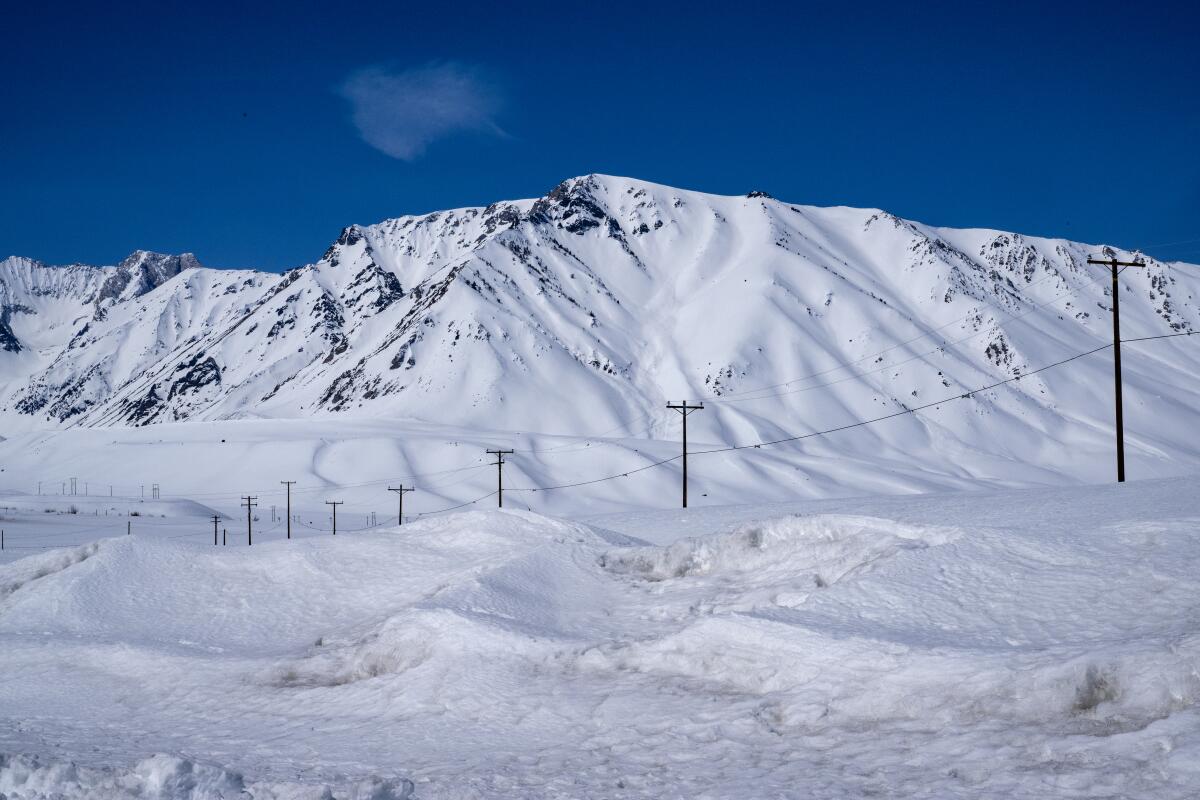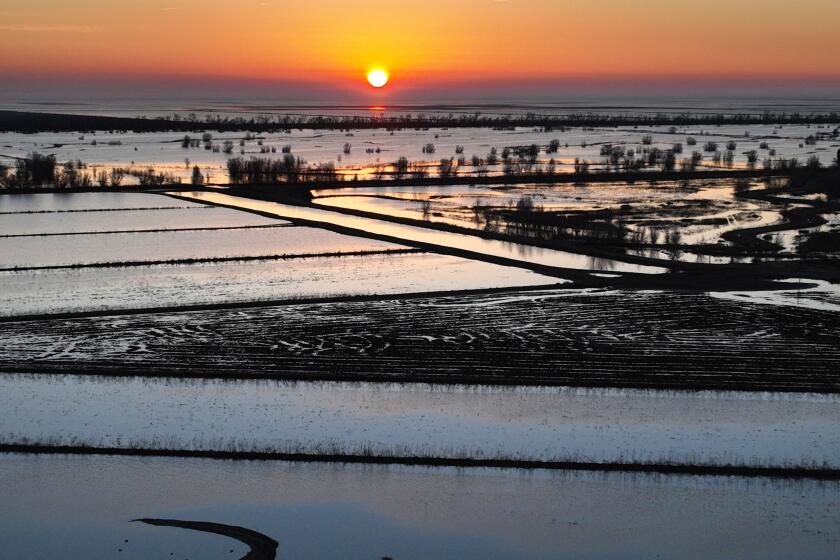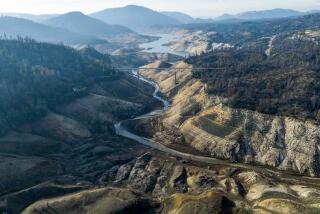Snowpack predicted to retreat in California’s mountains due to climate change

- Share via
This winter’s major storms laid down one of the largest snowpacks recorded in California’s Sierra Nevada, along with an unusual amount of snow at low mountain elevations.
But such prolific snowfall at lower elevations is set to become increasingly rare in coming years as climate change drives temperatures higher, according to new research.
In a study published this week, scientists found that mountain snowlines in California have already crept higher, and could rise significantly more if nothing is done to slow the pace of global warming. Researchers projected that from the 2050s to 2100, rising temperatures could push average snowlines 1,300 feet to 1,600 feet higher across the Sierra Nevada and the southern Cascades mountain ranges compared to a century earlier.
As more precipitation falls as rain instead of snow at lower elevations, the shifting patterns of runoff will pose substantial challenges for water management in California, and for the operation of dams that were designed to capture and store snowmelt.
“Snowlines are rising,” said Alexander Gershunov, a research meteorologist who co-authored the study with other scientists at UC San Diego’s Scripps Institution of Oceanography.
“If we look towards the end of the century, the snow will be confined to much higher elevations in most years,” Gershunov said. “Low elevation mountains will be more and more likely to be snow-free.”
From the sky, scientists are dropping devices with parachutes to peer into powerful atmospheric river storms, giving California advance warning.
After examining more than 70 years of snow data, researchers concluded that with unmitigated global warming, California’s mountains could lose more than half of their seasonal snowcover.
They said the average amount of snow from November through March in the northern Sierra could decrease by more than 70% by the second half of the century, while decreases of about 40% are likely in the higher mountains of the central Sierra and southern Sierra.
The research suggests similarly that large increases in the amount of precipitation falling as rain will bring heavier runoff during winter.
That will mean larger flows streaming from the mountains instead of melting off gradually, a trend that is already apparent and will complicate the work of dam managers, Gershunov said.
“It becomes more challenging to balance the need for flood control that reservoirs provide as well as water retention,” Gershunov said. “We have to learn how to generate water resources from floodwater.”
For one thing, he said, the trends show why it’s important for California to scale up efforts to capture and use floodwaters to replenish groundwater — which state water officials have said is a priority for adapting to more intense swings between drought conditions and bouts of wet weather.
The study’s authors said even as average snowlines retreat, California will still get big snow years at times.
The scientists found that as the planet warms with rising levels of greenhouse gases, more of the snow that falls in the mountains will come in atmospheric rivers, which are warmer and generally have higher snowlines than other winter storms. And according to other research, such storms will grow more potent as temperatures rise, transporting more water vapor.
“At the very high elevations, ironically, we’re getting more likely to have unprecedented snow accumulations, because specifically atmospheric river storms are getting wetter,” Gershunov said.
The scientists also looked at how retreating snow lines could affect the skiing industry after 2050 under a scenario of unmitigated warming. They estimated that lower elevation ski areas, such as Northstar California Resort, in Truckee, and Palisades-Tahoe, in Olympic Valley, could lose more than 60% of their average snow accumulation.
Higher ski runs, such as those at Mammoth Mountain, in Mammoth Lakes, are projected to have smaller average snow losses.
In parts of California’s Central Valley, farmlands are being used to soak up storm water and replenish depleted groundwater.
The research, which was published in the journal Climate Dynamics, was funded by the U.S. Bureau of Reclamation and the California Department of Water Resources.
The research brings new insights about the shift to more rain and less snow, including watershed-level projections that could help show where vulnerabilities in water management may lie, said Michael Anderson, state climatologist for the Department of Water Resources. He said this study and other research “help guide some of the choices that we’re making in terms of setting those adaptation strategies to climate change.”
The findings add to other research showing that average snowpacks have been decreasing in most areas of the continental United States, and that large decreases in snow are likely by the end of this century.
The latest research adds a focus on snowlines, said Philip Mote, a climate scientist and dean of the graduate school at Oregon State University, who wasn’t involved in the study.
“It’s no surprise that, this year notwithstanding, a warming climate will generally lead to less snowpack. The questions are how much and how to deal with it,” Mote said.
He said the heavy snowpack of 2023 is “within normal variability, but big snow years will continue to be rarer.”
“I expect that in 20 years we’ll still be reminiscing about 2023,” Mote said.
Mote pointed out that the study used a high-emissions scenario of global warming, but it looks unlikely for emissions to reach that trajectory, so he expects “things won’t be as bad as this paper describes.”
Gershunov said the authors didn’t account for efforts to mitigate climate change.
“There is still an opportunity to reduce some of the impacts that we have identified,” he said. “I would like to see both more aggressive climate mitigation globally and better informed climate adaptation locally and regionally, which this type of study should inform.”
More to Read
Toward a more sustainable California
Get Boiling Point, our newsletter exploring climate change, energy and the environment, and become part of the conversation — and the solution.
You may occasionally receive promotional content from the Los Angeles Times.









